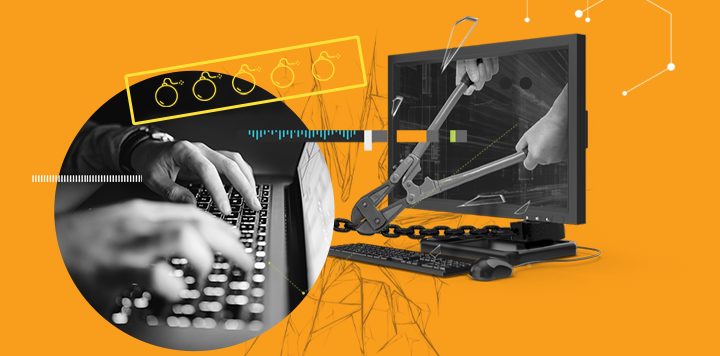Many would ask “what is a data breach?” and what are its types? Data breaches can result from several different factors—from intentional attacks to simple oversight by employees or flaws in company infrastructure. While unauthorized access by an accidental insider occurs without intent to compromise personal information, malicious insiders access the information and share it with malicious intent.
Malware
Malware is a kind of software that is designed to infiltrate computers and steal private data. These programs are available in different varieties, ranging from adware (which displays ads on the screen) to rootkits (which can let unauthorized users gain access to your computer). Other types of malware include ransomware, which encrypts files and blocks access until a ransom is paid. Other types of malware, such as worms, replicate by infecting other computers connected to the same network.
Trojan malware is a type of malware that disguises itself as a legitimate program or file to infect your computer. Once inside, this malware can steal information and use it to make more malware.
Employee Mistakes
Employee mistakes are one of the most common causes of data breaches. One recent example involved an NHS trust that exposed the email addresses of 800 HIV patients. This occurred when an employee accidentally sent PHI to the wrong recipients. The employee was aware of the error but failed to take proper care to prevent the data breach.
Employees under stress and fatigue are also more prone to making cybersecurity mistakes. A recent survey revealed that half of the employees were more likely to make mistakes if stressed. About 43% were more likely to make mistakes if they were tired or distracted. In addition, nearly half of all employees were at risk of making cybersecurity mistakes if they worked from home.
Cybercriminal Attacks
Data breaches are one of the major risks for organizations. There are many different types of attacks, including ransomware and malware. These attacks can damage an organization’s reputation as well as its assets. Some types of attacks are more complex than others, but they all have the same general characteristics. The attackers typically target high-value data to make a profit or harm.
Cyber espionage is a type of cybercriminal attack that targets high-level executives of a company and steals sensitive information. This includes financial information and employee personal information. These attacks are a growing threat, and organization-wide cybersecurity has never been more important.
Malicious Attacks
Malicious attacks are one of the most common types of data breaches. They involve an attempt to hack into a system or a computer and use it to cause damage. They can disrupt a system’s normal operation, corrupt critical OS files, and even physically destroy a target device. Additionally, malware can be directed to perform large-scale DDOS attacks.
One of the most common types of malicious attacks is the Trojan horse, which uses a malicious program hidden inside a legitimate program to gain access to a system.
Unintentional Breaches
While there are many reasons why a data breach can happen, only a small percentage are deliberate. Some breaches result from mistakes, while others are motivated by financial gain. Regardless of the cause, it is vital to take proactive measures to protect your data and prevent further damage.
The most common causes of data breaches are people and devices. While some people are required to have access to sensitive information, others may not, which is why it is important to protect your sensitive data. Data breaches can happen through intentional or accidental actions, such as uploading data to an unsecured network or misconfiguring access permissions. It can also be caused by disposing of old equipment or uploading it to an unsecured share.
Data breaches have many costs, ranging from direct financial costs to company fines. In addition to direct financial expenses, they can result in stricter privacy regulations and administrative burdens. These regulations help organizations secure user data and prevent them from being leaked.












